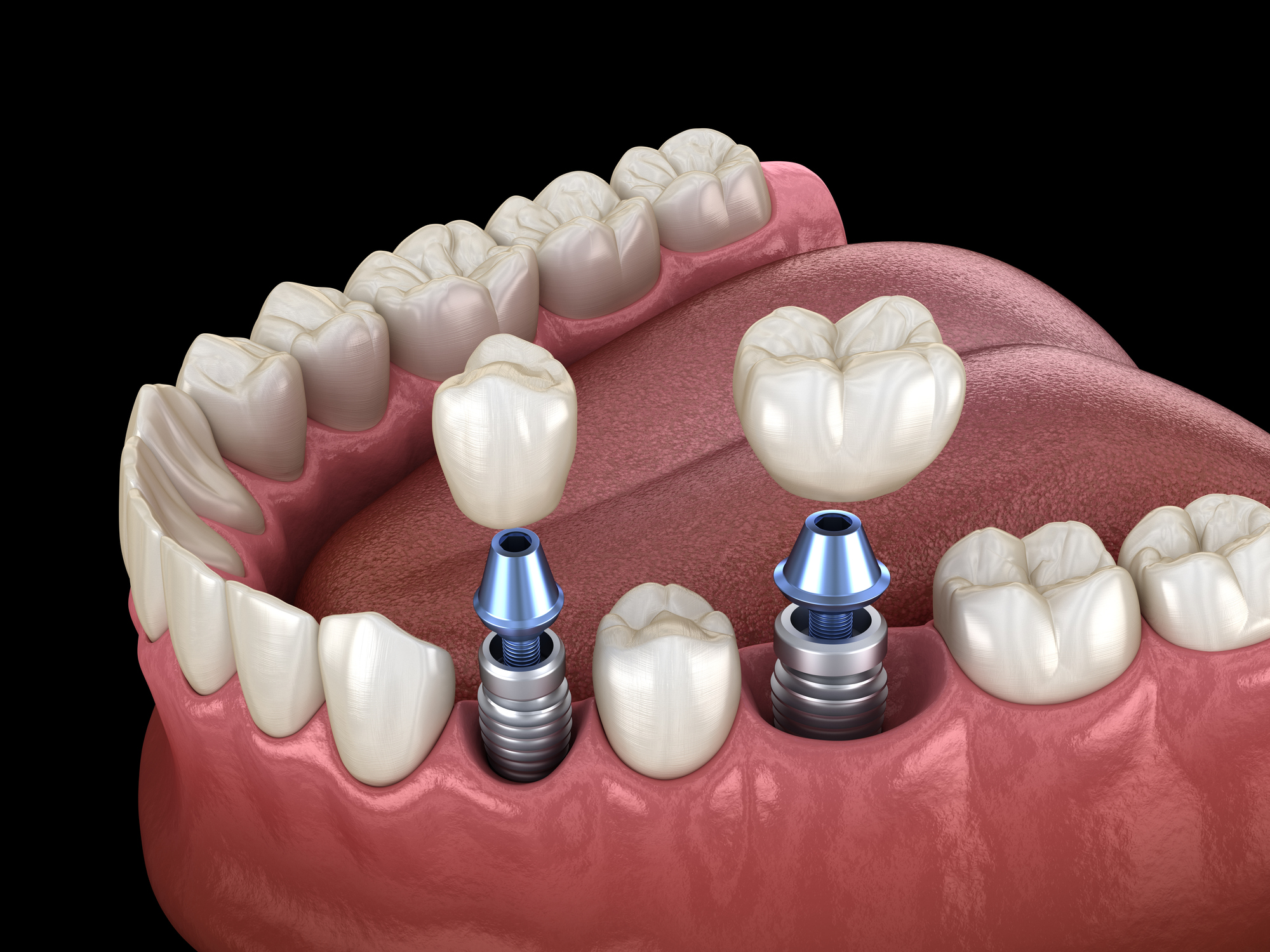The Buzz on Dental Sense
Table of ContentsOur Dental Sense StatementsDental Sense for DummiesThe Main Principles Of Dental Sense A Biased View of Dental Sense
are clinical gadgets operatively implanted into the jaw to restore an individual's capability to eat or their look. They provide support for artificial (fake) teeth, such as crowns, bridges, or dentures. When a tooth is lost because of injury or illness, an individual can experience problems such as rapid bone loss, malfunctioning speech, or adjustments to chewing patterns that cause pain.Dental dental implant systems are composed of a dental implant body and oral implant joint and may also consist of a joint addiction screw. Dental implant vs bridge. The oral implant body is operatively inserted in the jawbone in location of the tooth's origin. The oral implant abutment is usually connected to the implant body by the joint addiction screw and extends with gums into the mouth to sustain the connected artificial teeth
(https://www.pageorama.com/?p=dentalsense1)Structure of The Oral Implant System picking dental implants, talk to your dental copyright about the prospective advantages and risks, and whether you are a candidate for the procedure. Points to consider: Your general wellness is an essential consider determining whether you are a good candidate for dental implants, exactly how long it will take to heal, and the length of time the dental implant may remain in location.
Smoking might impact the recovery procedure and lower the long-term success of the implant. The healing process for the dental implant body might take numerous months or longer, during which time you commonly have a short-term joint in place of the tooth. the dental implant procedure: Meticulously adhere to the dental health guidelines provided to you by your oral supplier.
All About Dental Sense
Implant failing can cause the demand for an additional procedure to repair or change the implant system. Restores the capacity to chew Recovers aesthetic appearance Helps keep the jawbone from diminishing due to bone loss Preserves the wellness of the surrounding bone and gums Assists keep surrounding (neighboring) teeth steady Boosts top quality of life Damages to surrounding all-natural teeth throughout implant placement Injury to the surrounding tissues throughout surgical procedure, such as sinus opening Injury throughout surgical treatment (as an example, fracture of bordering jawbone) Poor feature, such as really feeling like the teeth do not attack together normally An experience that the tooth is loose or twisting in position arising from a joint screw loosening Implant body failure (looseness of the implant body) as a result of systemic infection, which may be most likely in clients with unrestrained diabetes mellitus as a result of local infection in bone and gums sustaining the implant body as a result of delayed recovery, which may be more most likely in patients that smoke Difficulty cleaning up the gums around the dental implant, causing inadequate dental hygiene Untreated periodontal disease Post-surgical tingling as a result of nerve impingement or damage Constantly inform healthcare providers and imaging service technicians that you have dental implants prior to any magnetic vibration imaging (MRI) or x-ray procedures.
FDA is not familiar with any kind of negative occasions reported for MRI or x-ray procedures with oral implants. Oral implants systems are generally made from products that comply with global agreement standards of the International Company for Standardization (ISO) or ASTM International. These criteria have information of what makes a safe product.

A dental implant is a structure that changes a missing tooth. With screw-like devices, the surgeon inserts an implant right into the jawbone, and it acts as a support for a fabricated tooth, called a crown. A gadget called an abutment attaches the fabricated tooth to the oral implant. The crown is customized to fit the person's mouth and match the shade of their teeth.
Dental Sense for Beginners
Some individuals are not qualified for oral implant surgery. It is for dental cosmetic surgeons to operate individuals with: severe illnessuncontrollable metabolic diseasebone or soft tissue disease or infectionIf these issues are solved, a person can have the surgical treatment. In, oral specialists refrain from operating on people with: If people with any of the above undertake dental implant surgical procedure, there is a higher risk of the implant stopping working.

Dental implant surgical treatment is a tailored process. It's not the same for everyone. The following provides a basic introduction of what you can anticipate your dentist, dental specialist, periodontist or prosthodontist to do: Put the dental implant surgically. Give you time to recover. Connect the message and final crown, bridge or denture.
Next off, your specialist will carefully put the dental implant into your jaw. Your cosmetic surgeon will certainly reposition your periodontals and close the cut with stitches. If your implant is near the front of your mouth, your dentist will make a short-lived tooth for you to wear till you recover. This way, you will not have a void in your smile while you recover.
The Best Strategy To Use For Dental Sense
Your provider can tell you what to expect in your situation. Throughout the recovery stage, your jawbone needs to fuse to the oral implant. This procedure, called osseointegration, is essential for stability and lasting success. This process can take anywhere from 3 to 9 months. In many cases, it may take longer.
As soon as your implant heals, your dental expert can connect the abutment (tiny port post) and your last restoration (crown, bridge or denture). This usually takes about one hour to complete and may call for a 2nd minor surgical procedure. You shouldn't feel any kind of discomfort throughout your dental implant procedure since your provider will certainly utilize drug to numb your gums.